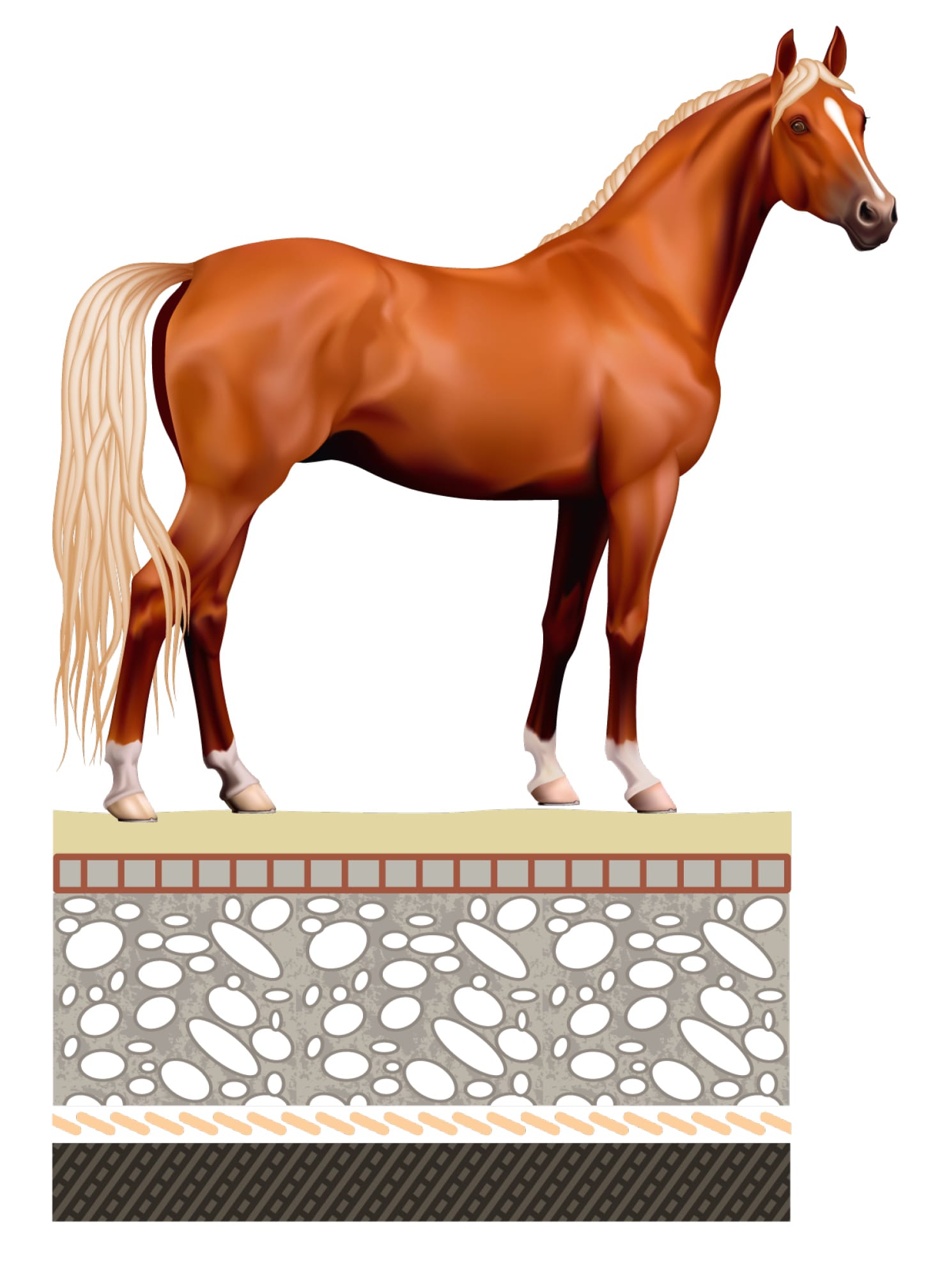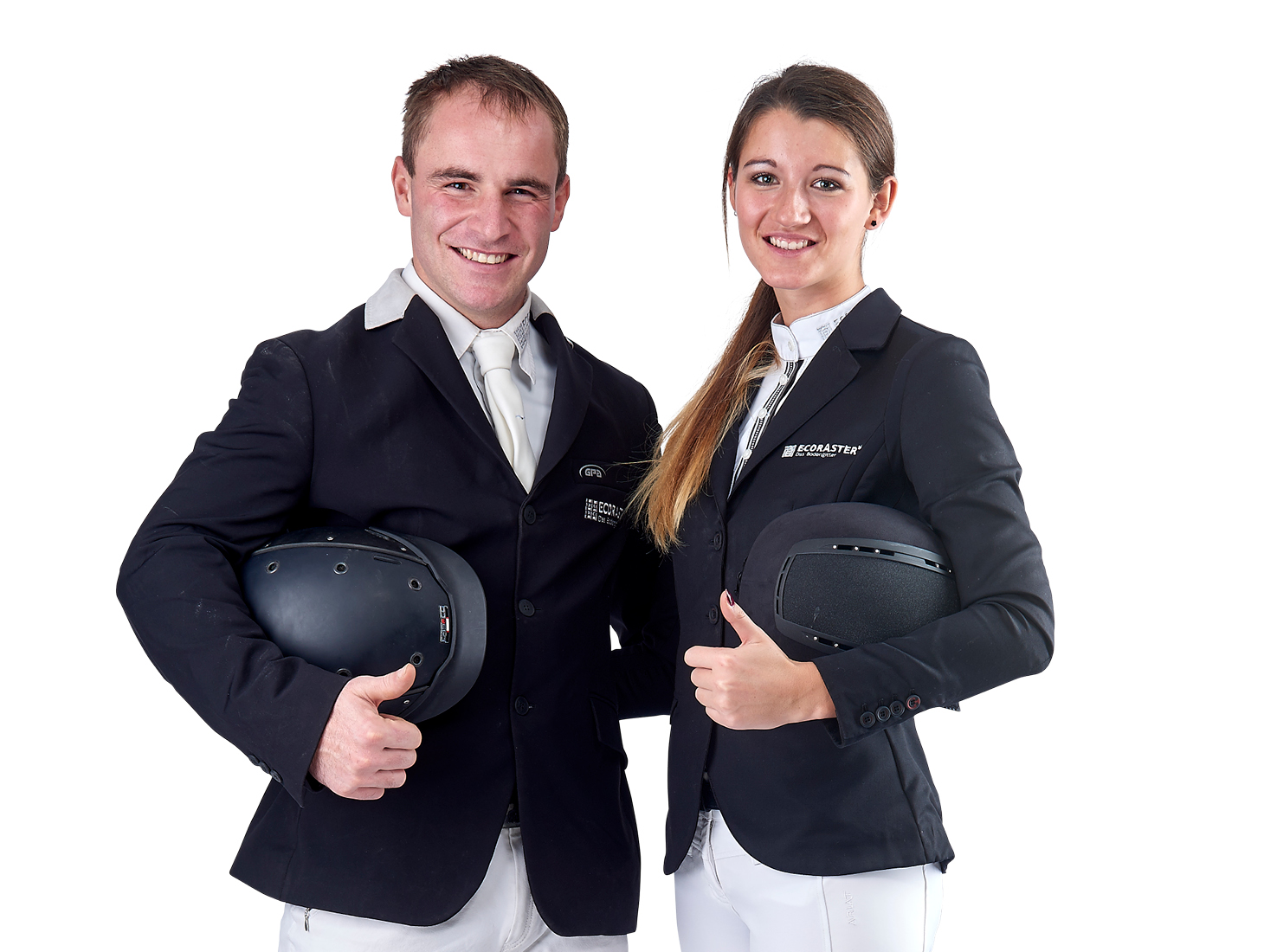Surface for paddocks and turnouts
Mud and sludge are things of the past. Your paddock surface can do more when it is reinforced properly.
A good paddock and turnout surface is always a compromise. From the point of view of the horse, it should be extensive, dry but not too dusty, elastic but firm. From the point of view of the owner, on the other hand, the durability, reliable drainage and maintainability play an important role. However you decide, a reliable surface reinforcement is essential here. On the one hand, because particularly high loads occur in a limited area in the paddock, and on the other hand because animals in their natural surroundings tend to uncontrolled movements. On no account undertake reinforcement half-heartedly. A good paddock surface has its price, but it also has its value.
The most important requirements
Species appropriate
Every horse prefers seminatural and open surroundings. Therefore, your paddock should be planned where possible to be generous, varied and have sufficient alternatives in order to measure up to the natural habitat of a horse.
No mud and clogging
Particularly with heavy precipitation, it is especially important that the water can run off quickly and the horses can stand on a dry surface. On the one hand, this is to protect the health of the animals, and on the other to ensure the paddock can be maintained.
Easy-care and resistant
A paddock is the living area of a horse and should be suitably clean and easy to clean. Alongside the resistance of the footings and grids to ammonia, your surface should be able to bear the load and able to be driven on to enable dung collection with a tractor.
Promotes health
Horse joints are hinge joints. As a result, a surface that prevents rotation movements can harm the horse. An elastic surface, on the other hand, provides the necessary movement stimuli and at the same time provides gentle shock absorption.
Stable, anti-slip and soft
The surface in a paddock should be soft and loose and provide comfort for the horse when lying. At the same time, it should also be stable enough and remain anti-slip under heavy loads in order to prevent injury to the animals.
You should take account of the following during planning
Size
Better too large than too small! You should plan for at least 50 m2 of paddock area per horse. The most frequent mistakes here involve turnouts that are too small, have too few stimuli for movement and poor fencing.
Water protection
Rainwater and liquid contaminants must not simply be directed into the sewer network. We therefore recommend permanent surface reinforcement that sustainably supports natural cleaning in the form of surface drainage.
Load
Paddocks are in principle intensively used surfaces. The number of horses and the size of the paddock determine the respective load. In principle, the rule of thumb applies that the higher the load, the more stable and elaborate the surface design.
Our recommended design: Minimal sub-structure, ECORASTER TP40 with light covering
The design of a paddock surface is dependent on the number of horses, the load and degree of use, the predominant surface conditions and the level of precipitation at the site. For high loads we recommend a 3-layer surface design. From experience, for medium loads a minimal sub-structure is sufficient with a separating layer using suitable grids and a covering of sand or footings. Here as well you can make use of our free, on-site consultation in order to make the best and most economical decision.
- Good drainage and systematic dewatering with no mud formation
- Securely fixed sub-structure, even with high loads
- No mixing of natural soil and covering
- Biological cleaning process through downwards drainage: Surface drainage
Natural soil
Remove the upper layer of the surface and establish a gradient of 1 – 1.5 % before installing the grids. For particularly loose surfaces, we recommend a construction fleece in addition to support the function of the separating layer. Onto this surface structure you ideally lay a permeable layer of grit or broken stone of 3 – 5 cm.
Separating layer
The demands on the separating layer are particularly high in a paddock. Thanks to its robustness and outstanding drainage functions, the ECORASTER TP40 has proven itself as a quality grid for paddocks. The paddock grid prevents water backing up on the surface even during wet seasons. As the filling material in the ECORASTER does not become compacted due to its stable cellular form, the water flows away unusually quickly. The volumes of the individual chambers provide an ideal store for moisture and thus protect from drying out too quickly.
Covering
Depending on the priority, a covering of sand or footings can be provided. A horse always prefers a softer surface, but this naturally increases the cleaning effort for you at the same time. We recommend a compromise, e.g. a light covering with proground footings to provide your horse with the necessary comfort when lying and to make the work and care for the surface easier.
The most common problems and solutions
Sludge, mud and worn areas
Some of the biggest problems in the paddock area are backed up water, mud and clogging of the surfaces, especially in wet weather. The causes of this are on the one hand the high loads and shear forces on the surface and on the other hand in most cases the lack of a permanent surface reinforcement. This provides a real vicious circle, as the drying out of mud areas causes a further compacting of the surface. Hoof diseases and mallenders will soon appear. As a surface that is wet can contain less air, the surface also loses its insulating property. Our tip: Provide a surface reinforcement in good time that is tailored to the load and use. The cost will pay for itself several times over in the form of the well-being of the horses, durability, freedom from mud and cost of care.
Freezing of the paddock surface
Freezing of the paddock surface significantly increases the danger of injury for the animals: the surface becomes smooth, hard, dry and loses its functionality. In the winter, you should therefore add frost protection to be able to use the paddock even in extreme temperatures. It is best to do that regularly, as the salts are washed out of the surface in the medium term.
Our products for your paddock
Some references for Surface for paddocks and turnouts
You want your paddock to be free of mud? A phone call is sufficient!
Arrange a meeting on-site or describe your problems or construction plans to us. Even on the telephone we can still give you valuable tips.










